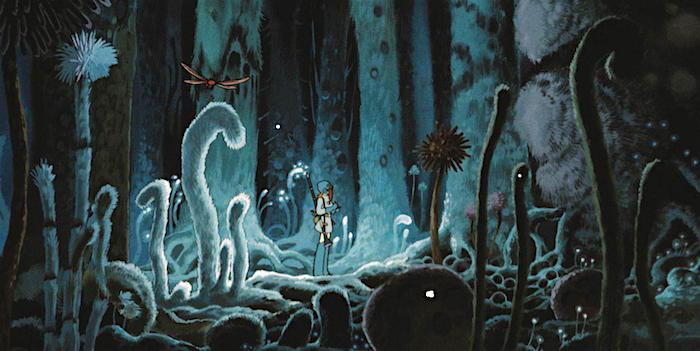The Byrd Theatre’s repertory theme for January is “The Future Is Now.” Personally, I spend a great deal of time worrying about the future. Not only my own, but the future of Earth. Humans have already destroyed so much of this planet, is it even possible to repair our home?
I can tell this is a question that is also on Hayao Miyazaki’s mind. The Japanese writer and director is known for “My Neighbor Totoro,” “Kiki’s Delivery Service,” and “Howl’s Moving Castle”, amongst many other animated classics. Miyazaki is a known environmental activist and the majority of his movies showcase his distrust in technology and manmade advancements, and feature spellbinding depictions of the natural world.

Released in 1984, “Nausicaa of the Valley of the Wind” is Hayao Miyazaki’s second film. It tells the story of battle on a planet on the verge of death. A thousand years ago, a global war called “Seven Days of Fire” has wiped out most of humanity and civilization. Toxic plants and gigantic mutated insects grow and form the Fukai, a sort of swamp of life and death. However, humanity still exists in scattered, small pockets. The film centers around Princess Nausicaa, a skilled, nature loving young warrior who reigns over The Valley of the Wind, a small island where the strong gusts of air from the ocean nearby serve to protect its inhabitants from the spores spread by the poisonous plant life and fauna within the Fukai.

Miyazaki drew influence from Homer’s “The Odyssey” for his protagonist. When Odysseus shows up shipwrecked on the coast of Scheria, Nausicaa, native to the land and daughter of King Alcinous and Queen Arete, discovers him and invites him to their home to recuperate. When Odysseus bids her adieu, she tells him, “Never forget me, for I gave you life.” Miyazaki based his Princess Nausicaa off of a Japanese translation of The Odyssey by Bernard Evslin, in which she is portrayed as a lover of nature. In this film, Nausicaa too creates life. She spends her time cruising on her glider into the toxic jungle, where she studies the growing plants and beings there and collects samples to grow in her lab for study. She has a way with animals, and can tame the feistiest of creatures. “What a mysterious power she has,” one warrior wonders to himself. Nausicaa can also communicate with Ohmu, giant caterpillar-like creatures who guard the Sea of Decay.

In an article entitled “Nature and Asian Pluralism in the Work of Miyazaki Hayao,” Sugita Shunsuke writes; “By conventional human standards, the Sea of Decay is neither idyllic nor lovely to behold, yet Princess Nausicaä pronounces it beautiful. In Miyazaki’s view, there is far more to nature’s wonder than pretty flowers and trees. In the Sea of Decay, which continues to thrive and evolve amid discarded metal and ceramic objects and radioactive waste, Princess Nausicaä perceives a higher order of beauty, the sublimity of nature’s ever-changing vitality.”

Miyazaki wants to show us that the natural world is more powerful than humankind and everything we could possibly invent combined. In fact, his current project is the creation of a nature sanctuary. In 2016, Miyazaki announced he will be designing and opening “The Forest Where the Wind Returns,” a 10,000 square meter park within the Zendo Forest Park in Okinawa, Japan. It will be devoid of food courts, gift shops, and all capitalist ventures, and will instead be a dwelling where children can explore and grow enchanted with the natural world. It will also include a large library and sleeping quarters. The design will have little impact on the land and will outsource local labor and talent to make it all come to fruition.
Miyazaki can effortlessly combine awe with social commentary. In movies like “Nausicaa of the Valley of the Wind,” he is simply reminding his audience of the magic around us. We cannot ignore our dying planet. We must recaptivate ourselves with the wonder that Miyazaki sees, and calls on all of us to see.
“Nausicaa of the Valley of the Wind” will be shown at the Byrd Theatre on Saturday, January 25, 2020 at 10 am as part of the Family Classics Series.